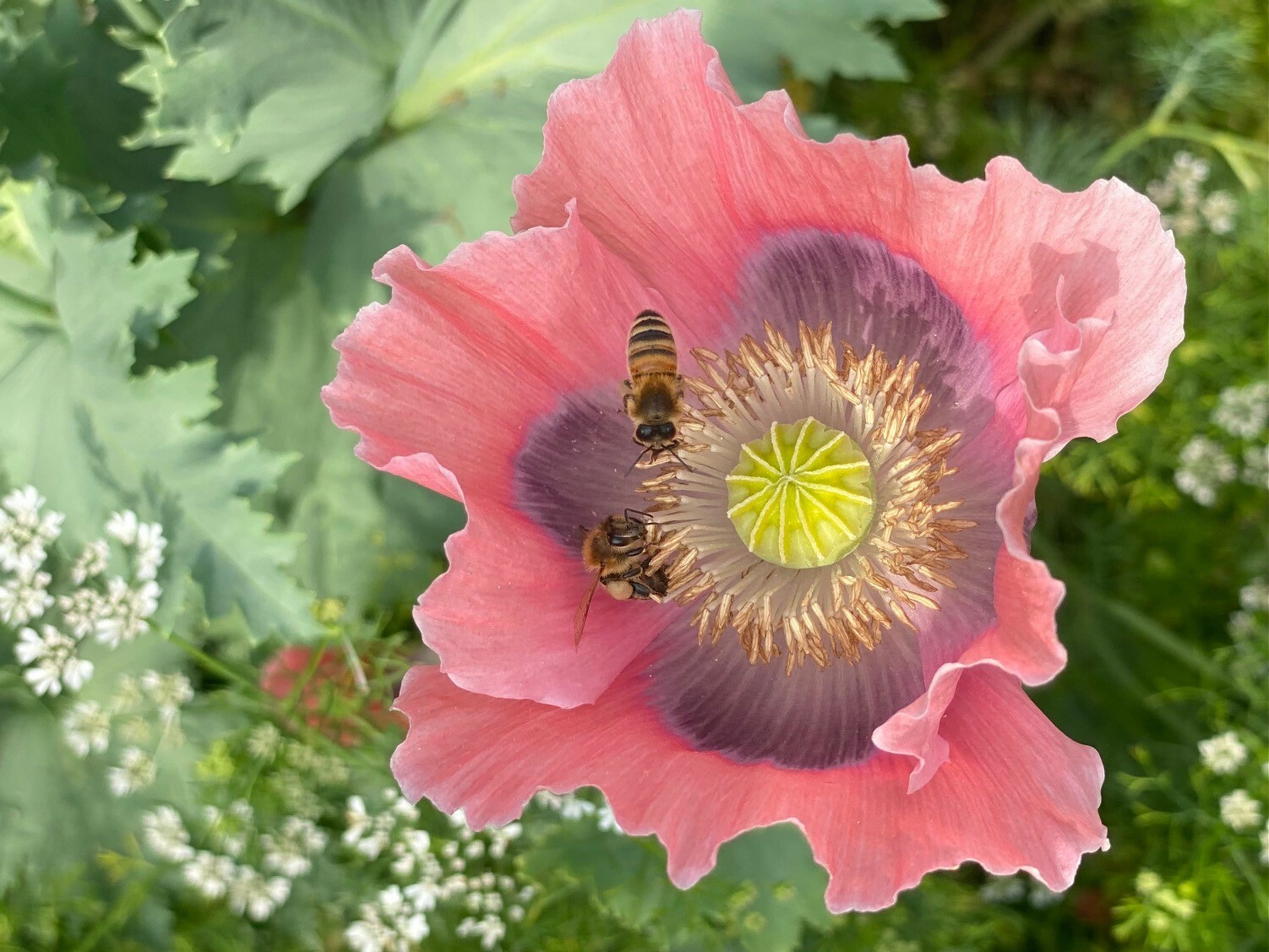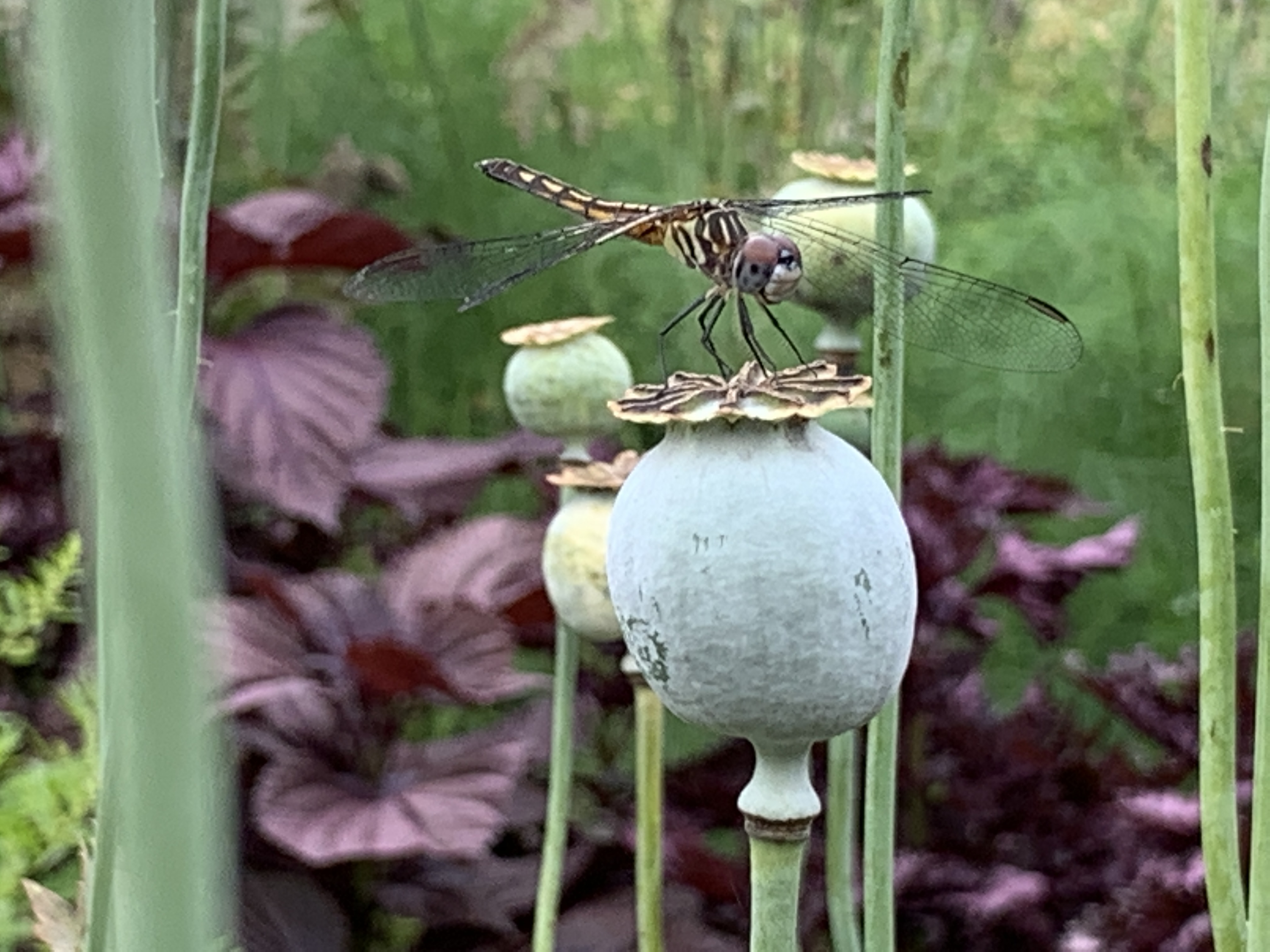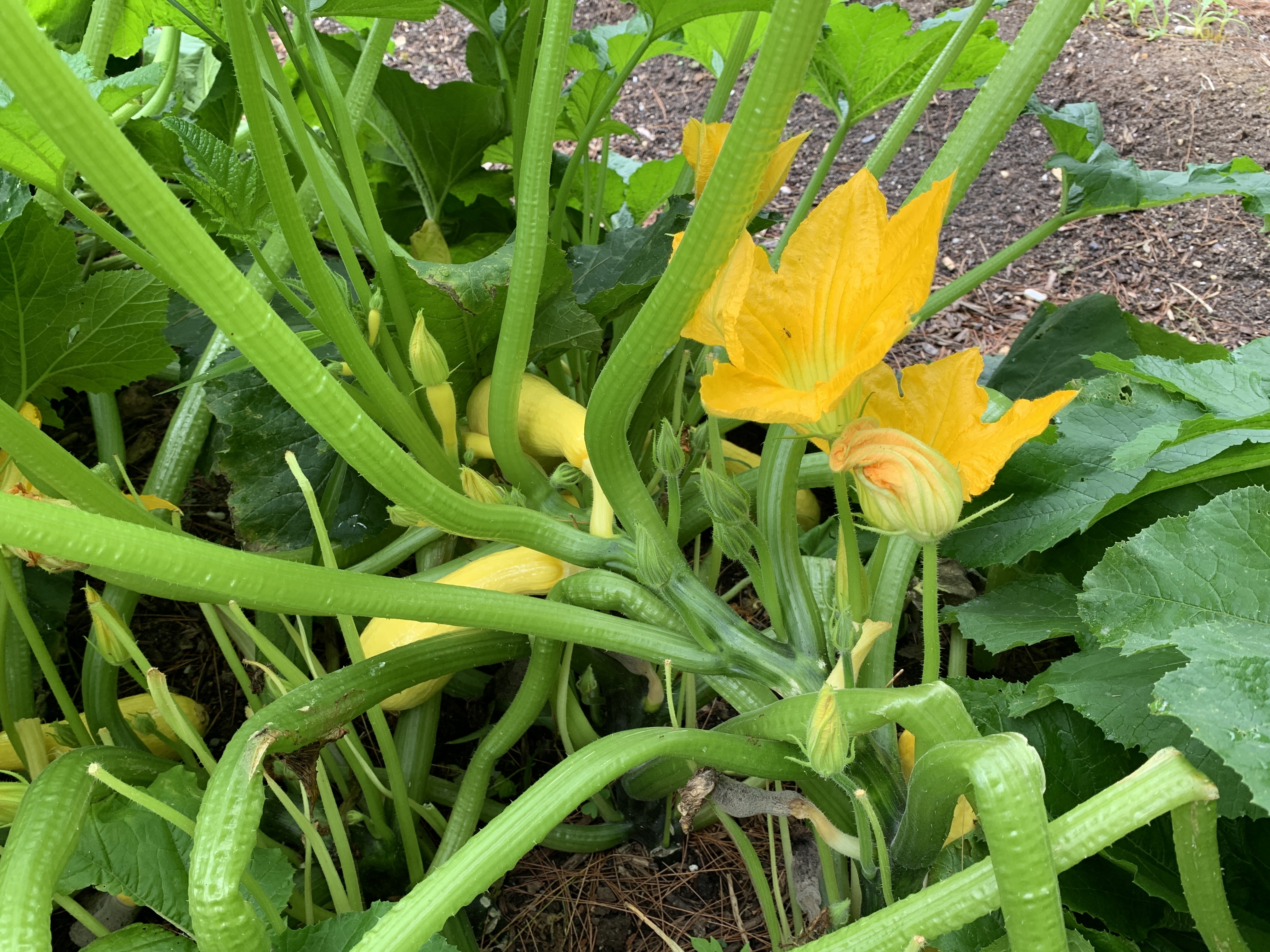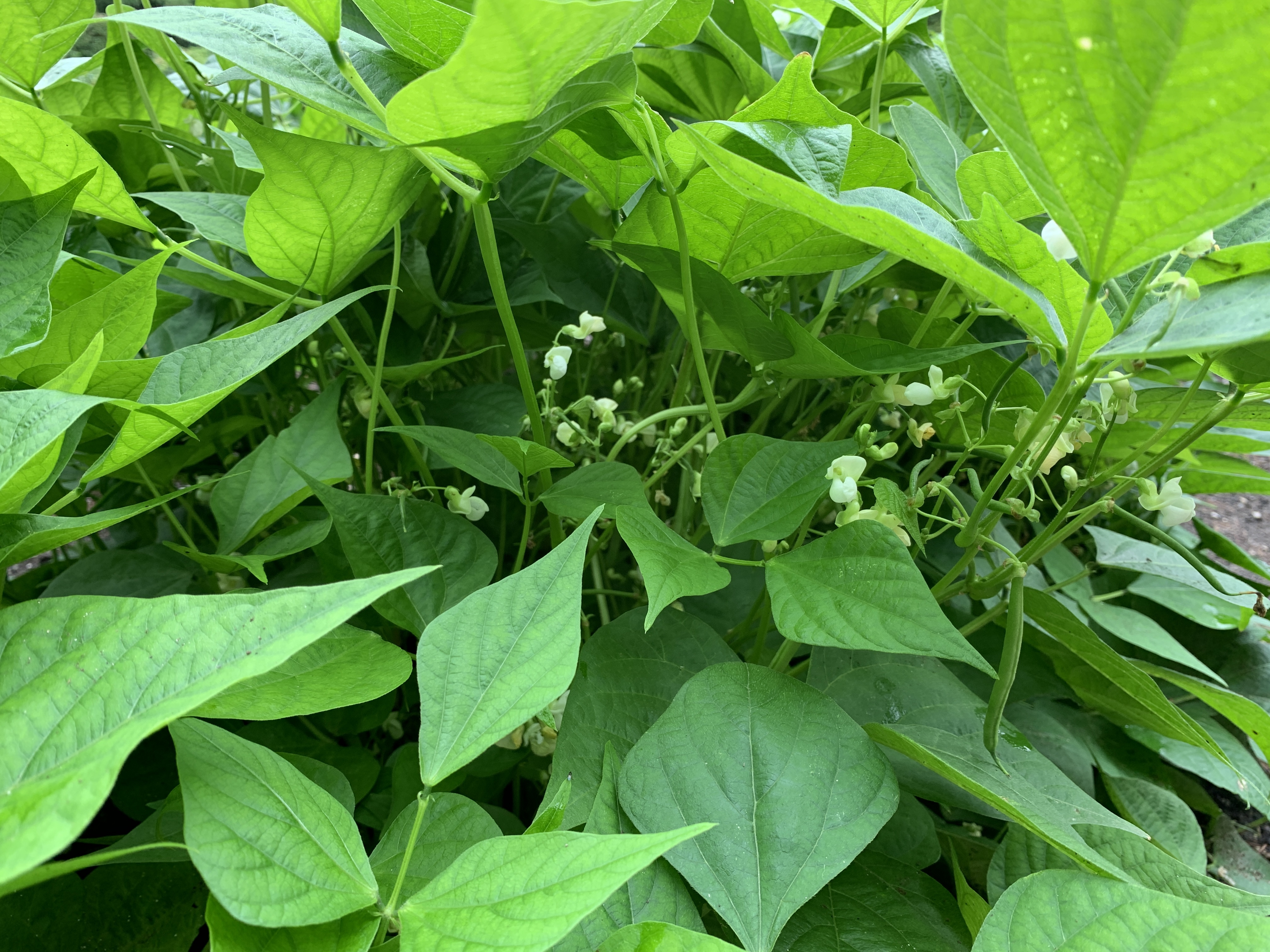Blog
A Note From Rick | July is Pollinator Time
By Rick Bogusch
Without question, the herb garden is the best location at Bridge Gardens to see pollinating insects at work.
Bugleweed and woad offer some of the first flowers of the year to bees and other insects braving the cold days of March and April. Foxgloves, poppies, feverfew, valerian and catnip, along with sage, thyme, lovage, dill and coriander, provide nectar and pollen to a wide variety of winged visitors in early summer. Later in the season, catmint (Calamintha nepeta) and mountain mint (the native Pycnanthemum muticum), as well as coneflowers, basils and oreganos, keep them coming back to the garden well into the early days of autumn.

Bees gathering nectar from a poppy in the herb garden.

Dragonfly on poppy seed head
The culinary bed will feature some interesting herbs this year. Look for epazote, often used in Mexican cooking; avocado, whose charred leaves add a sweet, fennel-like taste to dishes south of the border; pepicha, a Peruvian herb whose taste resembles cilantro; ginger, turmeric and lemon grass, whose roots and stems are staples of Asian cuisine.
![block.image[0].title](/assets/images/epazote.JPG)
Epazote is used in Mexican cooking
We’re always looking for basils that resist downy mildew, a fungal disease that causes leaf drop and affects yield and quality. For Genovese-type basil, I like varieties from the Prospera series and a Rutger’s introduction known as Devotion. Resistance is not complete, but plants remain disease-free longer than traditional varieties. Ask for these at your local garden centers.
Basils in the herb garden’s culinary bed include Persian, which is sweet and anise-y, with pretty flowers and strong disease resistance; Mrs. Burns lemon basil, a lemon-scented heirloom variety; Greek or perpetual basil, which is columnar and provides abundant leaves for Caprese salad well into September; African Blue basil, a clove-scented hybrid which blooms and blooms and blooms until frost, and is always abuzz with honey bees. The last two do not produce seed and must be grown from cuttings.
![block.image[0].title](/assets/images/African-blue-basil.JPG)
African blue basil
In the medicinal bed, look for camphor basil, a species from East Africa and still the source of camphor oil and an important part of herbal medicine in southwest Asia. Herbs have been a source of natural medicines for thousands of years, with their uses passed down through generations in cultures around the world. Bridge Gardens will host a talk in early August entitled, Natural Medicines from the Herb Garden. Check out the details here and reserve your spot today.
![block.image[0].title](/assets/images/native-yarrow-textile-bed.JPG)
Yarrow is a medicinal plant historically used for fever and gastrointestinal issues.
The vegetable garden in July is full of abundance.
We’re happy to be sending snap peas (a bumper crop this year), cauliflower, kale, chard, beets, summer squash and the last of spring lettuce to our local food pantry. Many of these crops will continue to yield for weeks to come, as will second sowings, and will be joined by harvests of cilantro, carrots, and green beans.

Summer squash has already been harvested for the food pantry

The harvest of green beans is expected soon
We’ve been removing suckers and tying up tomatoes weekly and removing lower leaves to improve air circulation, reduce the spread of disease, and let in sunlight to ripen low-hanging fruit. Seeing lots of flowers and small fruits give us hope for good yields this season. We hope the same for our peppers, eggplants and cucumbers, all recently planted and growing well.
![block.image[0].title](/assets/images/tomatoes-closeup.JPG)
Green tomatoes will turn red in the coming weeks
Mid-July through late August is a good time to
- make additional sowings of beets, carrots, beans and herbs like cilantro and basil for harvest at the end of the season.
- seed fall crops of cabbage, broccoli, cauliflower for planting out in the garden in a month or so.
- Buy your seeds for fall crops soon to get the best selection.
And don’t forget to order garlic now for shipping and planting in October.
![block.image[0].title](/assets/images/currant.JPG)
Currants are part of the edible landscape and are being harvested now.
July is a great time to visit Bridge Gardens and enjoy the colors of summer.
AND you can also explore our newly installed sculpture exhibition located throughout the grounds. I think these beautiful sculptures really enhance the gardens and landscapes of Bridge Gardens and I hope you do, too. Check out our calendar and be sure to join us for upcoming programs, including several in-person events! I look forward to seeing you soon.
~~ Rick
![block.image[0].title](/assets/images/acanthus2.JPG)
Acanthus blossoms frame a sculpture by Kevin Barrett

